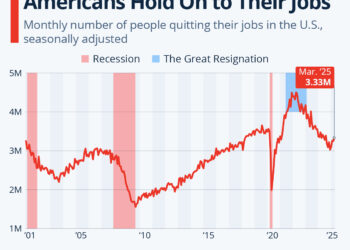Understanding the Gender Pay Gap in the United States
The gender pay gap remains a critical issue in the United States, reflecting disparities in earnings between men and women across various sectors and demographics. This blog delves into the current state of the gender pay gap, highlighting the statistics and implications for different demographic groups.
Current Wage Disparities
In 2024, women in the U.S. were faced with a significant challenge regarding their earnings compared to their male counterparts. On average, American working women earned 83 cents for every dollar earned by men. This statistic becomes even more alarming when viewing it through the lens of deeper racial and ethnic divisions. The average wage gap indicates that women, particularly women of color, experience a significantly larger disparity in earnings.
U.S. Equal Pay Day
In the ongoing fight for equal pay, the U.S. Equal Pay Day symbolizes how far into the new year women must work to earn what men earned in the previous year. This day serves as a stark reminder of the ongoing struggle for wage equality. For 2024, the Equal Pay Day moved from March 12 to March 25, marking a setback in the fight for equal pay.
Subsequent Equal Pay Days
The American Association of University Women (AAUW) has also proposed specific Equal Pay Days for women of various racial and ethnic backgrounds. These dates illustrate the widening gaps and inequities that exist not just by gender but also by race:
- Asian, Pacific Islander & Native Hawaiian Women’s Equal Pay Day: April 7, 2025
- Black Women’s Equal Pay Day: July 10, 2025
- Latina’s Equal Pay Day: October 8, 2025
- Native American Women’s Equal Pay Day: November 18, 2025
These dates highlight the prolonged challenges that women of color face in achieving wage parity, underscoring the need for targeted initiatives to address these disparities.
Breaking Down the Numbers
The statistics surrounding the gender pay gap reveal significant inequalities based on race as well:
- Black Women: On average, Black women earn only 66 cents for every dollar earned by white, non-Hispanic men.
- Native American Women: Their earnings are similarly staggering, with a mere 58 cents for every dollar earned by their white male counterparts.
- Latinas: They face an identical situation, earning just 58 cents for each dollar.
- Asian, Pacific Islander & Native Hawaiian Women: In contrast, this demographic earns more, with 97 cents for every dollar men make, which places them above the national average but emphasizes racial disparities still exist.
Trends in Earnings Over Time
Historically, the pay gap for women in the U.S. has shown a gradual improvement, particularly for Asian women, whose earnings have seen a notable increase over recent decades. However, recent statistics indicate that this progress has stagnated. In recent years, the increase in earnings has slowed to just one or two cents annually, and a recent decline was observed with a drop of one cent.
Factors Contributing to the Gender Pay Gap
Several factors contribute to the persistent gender pay gap, including:
- Occupational Segregation: Women and men often work in different industries and occupation types, with traditionally female roles generally paying less.
- Work Hours: Women are more likely to work part-time or in seasonal positions, which tend to offer lower wages and fewer benefits.
- Negotiation Disparities: Studies suggest that women are less likely to negotiate salaries than men, potentially leading to lower starting salaries and wage growth over time.
The Impact of Legislation
Recent legislative efforts to promote pay equity and address these disparities are vital. Proposed bills and reforms seek to mandate pay transparency and equitable hiring practices, aiming to bridge the wage gap. Advocacy from organizations continues to pressure lawmakers to create lasting changes that can benefit working women across the nation.
The Path Ahead
While the statistics around the gender pay gap paint a concerning picture, it highlights the ongoing need for advocacy, policy change, and societal shifts to create a more equitable workforce. By understanding the landscape of the gender pay gap and the complexities surrounding it, we can begin to take action towards a more balanced and fair economic future for all.




